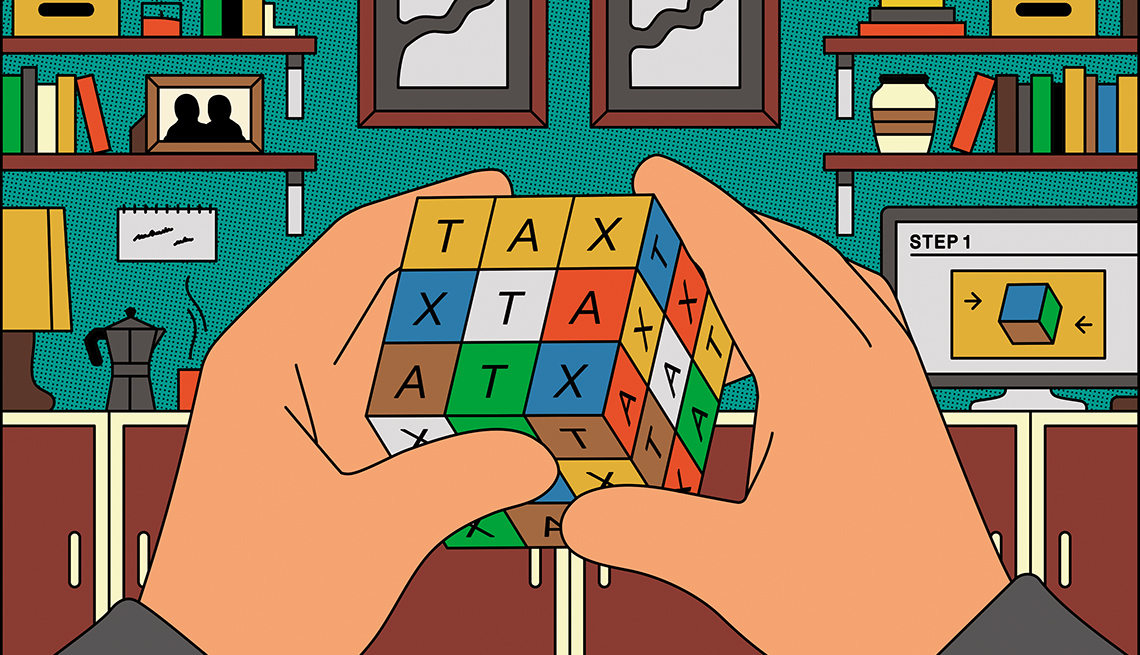
10 essential facts about federal income taxes
- Select a language for the TTS:
- UK English Female
- UK English Male
- US English Female
- US English Male
- Australian Female
- Australian Male
- Language selected: (auto detect) - EN
Play all audios:

3. IF YOU EARN YOUR MONEY THE OLD-FASHIONED WAY (WITH A SALARY) SAVING IS YOUR BEST TAX-CUTTING OPTION … For all those years when you’re collecting a paycheck, you have just a few levers
you can pull to meaningfully reduce your tax bill. The best of them are 401(k)s, 403(b)s and IRAs — accounts that let you set aside large chunks of earnings for the future without having
to pay taxes on them first, or as they grow in value. Yes, you’ll have to pay taxes on them someday, but often at a lower rate than you’re paying now. In 2022 you can contribute up to
$27,000 to a 401(k) or 403(b) if you’re 50 or older; up to $7,000 to an IRA; or both. A Health Savings Account (HSA) is another useful tax-planning tool. It offers triple tax benefits:
You don’t have to pay taxes on the money you put in, the account grows tax-free, and withdrawals are tax-free, too, as long as you use the money for qualified medical expenses. You can fund
an HSA only if you have a high-deductible health insurance plan, which is increasingly common; 58 percent of people offered health insurance at work have access to a high-deductible plan,
according to the Kaiser Family Foundation. In 2022 you can contribute up to $3,650 to an HSA if you have an individual health plan; up to $7,300 if you have a family plan — plus another
$1,000 if you’re 55 or older. 4. … BUT MAKING FINANCIAL MOVES SOLELY TO LOWER YOUR TAX BILL CAN LEAD YOU TO MAKE COSTLY MISTAKES. A lot of financial professionals — both legitimate
and less so — will latch on to your desire to avoid taxes, plus your wishful thinking, to sell you expensive and complicated products that promise to protect your money from the IRS. Watch
out! Picking financial products for tax purposes does you no good if the investment is a dud. “When the pitch for an investment opportunity leads with the tax savings, it’s usually a bad
idea,” says Scott Bishop, executive director of wealth solutions at Avidian in Houston. “Invest in something only if you would do so without the tax incentive.” 5. THE TAX SYSTEM IS
COMPLEX, AND THAT’S BY DESIGN. The tax code has two purposes: to provide the government with the money it needs to operate and to create incentives for taxpayers to do certain things
lawmakers would like them to do, such as save for retirement, pursue an education, give to charity or even buy an electric car. Whether taxes really change behavior, however, is open to
debate. Take the mortgage-interest deduction, which was meant to encourage people to buy a home by lowering their annual income taxes. Economists widely argue that all the policy did was
inflate home prices. At the same time, a 2014 study by the Center for Retirement Research found that the higher retirement-plan contribution limits that kick in at age 50 lead to only
slightly higher savings rates. Effective or not for society, these kinds of targeted provisions are popular with legislators — and they aren’t going away. “Simplification is discussed a
lot, but Congress is better at creating new programs than getting rid of old ones,” Luscombe points out. A 2017 TAX LAW MADE THE STANDARD DEDUCTION MORE ATTRACTIVE: * In 2017, 31
percent of tax returns were itemized * In 2018, 11 percent of tax returns were itemized 6. TAX FILING HAS BECOME SIMPLER, ESPECIALLY FOR PEOPLE WITH MODEST INCOMES … The 2017
tax-reform bill, while not delivering the promised “taxes on a postcard,” did streamline filing for many taxpayers by nearly doubling the standard deduction, which 9 out of 10 taxpayers now
claim. There’s no reason to go through the wearisome exercise of itemizing your taxes if your itemized deductions are less than the standard deduction. The result is no more time spent
chasing down every medical bill or donation receipt. “For the average working individual, I would argue that taxes are simpler,” Steffen says. 7. … BUT DIVING INTO THE COMPLEXITY CAN
SOMETIMES PAY OFF. Given all the fine print that taxes entail, the path of least resistance is to just enter your wage information into your 1040 and be done with it. But if you’re
actively avoiding the complicated stuff, remember this: “Most of the complications are things that help you reduce your taxes,” Luscombe notes.
